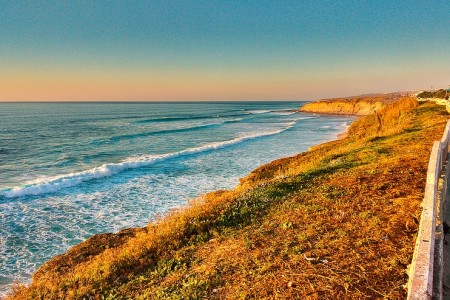Bonds Move Disaster Finance from Recovery to Resilience

Conservation professionals have a challenging path ahead, but resilience finance makes it easier. Out of the carnage that Hurricane Andrew caused in 1992, a market for catastrophe (‘cat’) bonds was born. While ordinary bonds pay buyers interest to cover the risk of default by the issuer, cat bonds compensate buyers with higher interest rates for taking on the risk of extreme events. In the event that disaster hits, investors lose their principal.
Availability and affordability of recovery financing post-disaster has become substantially greater than that of resilience financing pre-disaster. This is despite the ecological and societal harm of the former and the cost-effectiveness of the latter. While the cat bond market flourishes, the burgeoning green bond market still offers little incentive to invest in green infrastructure.
Progressively, municipalities and water resource managers are investing in resilience infrastructure to reap the benefits of healthy watersheds and mitigate economic losses of flooding. Examples can be glimpsed across a set of communities investing in forest-based natural infrastructure and oyster-reef restoration from the Chesapeake Bay to Staten Island. Flood-prone cities and public utilities will require significant adaptation financing to construct expansive natural infrastructure.
From Costly to Exorbitant
Floods are a global scourge. Review of all natural hazard costs worldwide from 1995- 2015 found that floods accounted for 46 percent of damage. The total rises to 71 percent when including storm-related damage, which often includes flooding. According to the United Nations, annual flooding increased by 34 percent to 171 flood events per year from 2005 to 2015 over the previous 10-year period.
In the United States, seven Atlantic hurricanes caused at least $1 billion in damage in as many years since 2010 – with Hurricane Sandy alone costing $75 billion. Moreover, in 2017, communities have already experienced hundreds of roads and vital waterways shut down through the Midwest and South. This is expected to worsen. Along the nation’s coastlines, researchers expect the average risk of 100-year floods to increase 40-fold by 2050.
From Post-Disaster to Pre-Disaster
One approach is to reorganize bond markets from the cheap post-disaster to expensive pre-disaster financing. By tapping into the vast pool of funds meant for recovery (cat bonds), the industry can divert savings into risk-reducing infrastructure projects. For example, part of the recovery from Hurricane Sandy included expanded funding for FEMA Hazard Mitigation. And Swiss Re, a reinsurance giant, has recently insured coral reefs on behalf of seaside hotels. The goal is to incentivize reef care.
A consortium that includes cat bond frontrunners (Swiss Re and RMS, a leading catastrophe modeling firm), the Rockefeller Foundation, and design firm re:focus partners formalized the concept in 2015. Their innovation, Resilience Bonds, links project finance, conservation objectives, and insurance coverage to create resilient-infrastructure systems with reduced expected losses from disasters.
From the onset, the market received a lot of press, but it was laced with complexity and uncertainty. The BBC explained the concept as “Imagine City X wants to build higher seawalls or fix its levee, but doesn’t have access to funds. When it goes to buy a multiyear, parametric cat bond for flooding, the insurer takes the expected impact of that planned investment into account and lowers the premium the city has to pay. With that cost saving in the budget, City X now has the money to fund its seawalls and levee – even if no disasters ever occur.”
The Wall Street Journal said that “Unlike ordinary cat bonds, they could provide ‘resilience’ rebates. While many details remain to be determined, the rebates would reflect the reduction in risk that occurs as seawalls or flood barriers begin to provide protection.”
Still, one of the founding partners, re:focus partners, pointed out “[The] connection between insurance and infrastructure is important because just as life insurance doesn’t actually make you physically healthier, catastrophe bonds do not reduce physical risks and only pay out when disasters strike.”
A recent 2017 report supported by the Nature Conservancy, Wildlife Conservation Society, and Lloyd’s doubled down on resilience bonds as “the most significant opportunity for financing green infrastructure.”
From Idea to Program
Before the concept can be commercialized and scaled, it needs to be tested.
One way is via the local-government channel. The Rockefeller Foundation is funding 100 chief resilience officers (CROs) in public office around the world. Boulder, Colorado’s CRO was quoted by the BBC as saying the city is involved in piloting the concept of resilience bonds and organizing workshops with the Stanford Urban Resilience Initiative on resilience finance.
Another approach can take place through the impact investment channel. Blue Forest Conservation has partnered with Encourage Capital and World Resources Institute and is supported by The Rockefeller Foundation and The David and Lucile Packard Foundation. It is piloting the Forest Resilience Bond from 2017 to 2019.
By reducing risk, we increase the value of adaptation finance. Still, local utilities, municipalities and businesses are the main players organizing investments and propelling green infrastructure. World Resources Institute says knowledge gaps remain a barrier. These can range from a lack of the financial resources and technical guidance for championing natural infrastructure to a struggle in quantifying the ecological and economic benefits of green infrastructure.
To comment on this article, please post in our LinkedIn group, contact us on Twitter, or email the author via our contact form.
